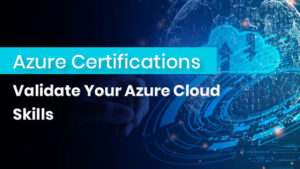
Role of Artificial Intelligence (AI) in Ethical Hacking
Role of Artificial Intelligence (AI) in Ethical Hacking Introduction In today’s digital landscape, cybersecurity threats are evolving rapidly, making ethical hacking more crucial than
Limited-Time Offer! Get an exclusive 40% OFF on IPSpecialist Premium Monthly & Annual Plans. Use Promo Code: UPSKILLNOW at checkout.

Role of Artificial Intelligence (AI) in Ethical Hacking Introduction In today’s digital landscape, cybersecurity threats are evolving rapidly, making ethical hacking more crucial than

How to Harden Your Infrastructure Using CIS Benchmarks Introduction As more organizations go faster with their digital transformation, the security and resilience of IT infrastructure

Azure Certifications – Validate Your Azure Cloud Skills Introduction Cloud computing has transformed the business landscape, providing scalability, flexibility, and affordability in a way
Table of Contents
Shutdown disruptions and the difficulty of quickly enabling a remote workforce have made flexible IT solutions necessary. Organizations require solutions that allow them to develop new business procedures, goods, and services if they remain competitive in today’s climate of rapid change. The everything-as-a-service (XaaS) approach is therefore becoming more popular.
Businesses were frequently restricted by outdated IT systems and conventional business procedures before XaaS. Currently, 80% of those that have adopted XaaS claim that the pandemic has sped up their transition from traditional IT to XaaS. It has allowed them to develop unconventional ways to live in unfamiliar territory. This article will cover the detailed knowledge of Everything-as-a-Service (XaaS).
Check out our Cloud Computing Courses now if you want to start your career in Cloud Computing.
To stay current and meet the demands of both employees and consumers, businesses have always needed gear and software that is newer, better, and faster. In the past, this often required significant CAPEX investments to upgrade software and buy new IT equipment every few years.
Everything as a Service commonly referred to as “Anything as a Service,” is a broad category of cloud-based products that may be accessed whenever needed and are remotely delivered. There are numerous options to supply XaaS, including:
A wide range of products, tools, and technologies are now delivered by XaaS solutions, which have been growing over time. Almost every IT feature can be made available as a service. Instead of making a one-time purchase, users can choose a flexible subscription model to pay for services. More flexible OPEX investments replace previously incurred CAPEX costs.
Businesses may get more control over their IT infrastructure, acquire new and cutting-edge technologies more quickly, and drastically lower operational expenses using XaaS.
Here are a few typical XaaS systems and an explanation of how they function:
In this business model, suppliers provide subscription-based cloud software. One of the popular cloud computing paradigms is SaaS. As adoption has grown, the cost has decreased. SaaS is simple to use, easy to manage, and extremely scalable. It is popular for supporting distributed teams because the software does not have to be downloaded and physically installed on individual devices. FreshBooks, Dropbox, and Microsoft Office 365 are a few well-known SaaS solutions.
Software developers can create, execute, and manage applications using a framework provided by PaaS in the cloud, free from having to worry about the upkeep of the development platform. Additionally, it enables programmers to create, test, and deploy programs in the same setting. Core PaaS services typically include development tools, middleware, operating systems, database administration, and infrastructure.
Companies can lease or rent individual pieces of IT equipment, such as computing infrastructure, processing power, and storage, as needed, due to a cloud service termed “Infrastructure as a Service” (IaaS).
To modernize business procedures, invest in cloud-native development, and rework software for cloud optimization, businesses are turning to IaaS today. IaaS-related examples include Microsoft Azure and Amazon Web Services (AWS).
An organized service called “Storage as a Service” offers backup, data, and application storage solutions in the cloud. Since organizations view STaaS as a cost-effective substitute for conventional physical storage and backup techniques.
STaaS has advantages for businesses of all sizes. Businesses can more easily comply with HIPAA and GDPR data protection rules by using compliant datacenters, which some service providers offer. Using technologies like AI and ML, data management services, and analytical tools, frequently bundled into subscription packages, can also be advantageous for businesses.
Organizations seeking to produce novel and creative solutions more quickly can take advantage of XaaS’s numerous advantages.
By converting capital expenditures into foreseeable monthly operational costs with XaaS, organizations can reduce their cost of ownership. The service provider often purchases and maintains the infrastructure. Consequently, XaaS aids in lowering overhead, personnel, and maintenance costs. As they may provision and pay for these components as needed, businesses no longer need to invest more money in computing power and storage in anticipation of future needs.
The XaaS model allows companies more flexibility to create novel products that adapt to shifting market conditions or seize new opportunities. To meet the needs of customers or employees, businesses can easily adapt to their technological environments.
XaaS relieves some of the burdens on internal IT resources because the service provider partially or entirely controls it. Organizations can streamline operations to concentrate IT resources on higher-value projects by shifting admin work to the service provider.
With ransomware attacks and cybersecurity dangers on the rise, a thorough data backup and recovery plan is essential. XaaS solutions can be a crucial component of ensuring the company can keep running in the event of a crisis.
Businesses can store data for extended periods to access infinite storage space. This enables them to examine past and present data trends to improve company decisions, improve customer experiences, and take advantage of new trends to acquire a competitive edge.
Business issues and difficulties related to XaaS include the following:
Customers rely on the infrastructure of the XaaS provider; any service interruptions could be problematic.
Customers count on a constant level of service from the provider. However, service providers may cease operations, be bought out, stop providing a service, or change their features at any time.
The environment and infrastructure of the service provider are not entirely visible or within the customers’ control.
XaaS adoption may have picked up recently, but most firms were already striving to save costs, get rid of waste, and boost efficiency and agility.
The march toward digitalization is expanding market options for companies to reach consumers. But it also makes things more competitive. Organizations must keep coming up with new ideas and seize these chances. Their capacity to scale IT resources up or down without committing to significant capital expenditures is a key factor in their ability to innovate.
XaaS may facilitate this innovation. As more services are supplied via the cloud and digital technologies like AI, ML, and IoT are more integrated. Offerings like XaaS can improve collaboration between IT and business divisions while assisting CIOs and IT leaders in prioritizing productivity benefits and new growth opportunities.
The expansion of XaaS is likely to benefit from cloud computing and widespread, high-bandwidth worldwide internet connectivity. As consumers move more workloads to the cloud, there are indications from manufacturers and researchers that XaaS will become a widely used business model.
Due to worries about governance, compliance, and security, several organizations are hesitant to implement XaaS. Service providers are, however, paying more attention to these problems.
The development of cloud computing has been a major factor in XaaS’s expansion. For XaaS providers, cloud-based services are the best choice due to their flexibility and scalability. The simplicity and adaptability of XaaS are what make it appealing. It can give companies a more affordable method to use the newest applications and technologies without significant capital expenditures.
Even though XaaS is still in its infancy, it has significantly impacted how consumers and organizations access and use technology. In the future, XaaS will probably play a bigger role in our lives.
© 2025 All rights reserved | Privacy Policy | Terms and Conditions | Sitemap | Cookie Policy

